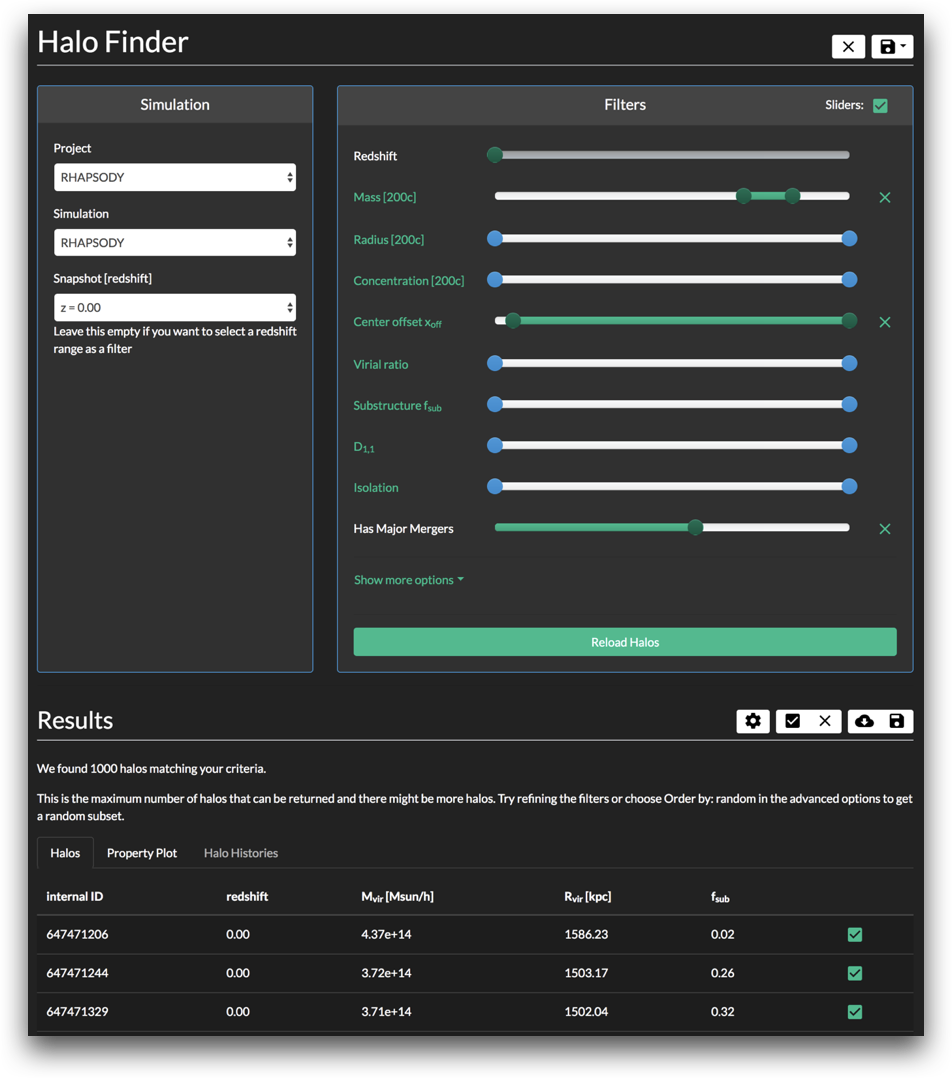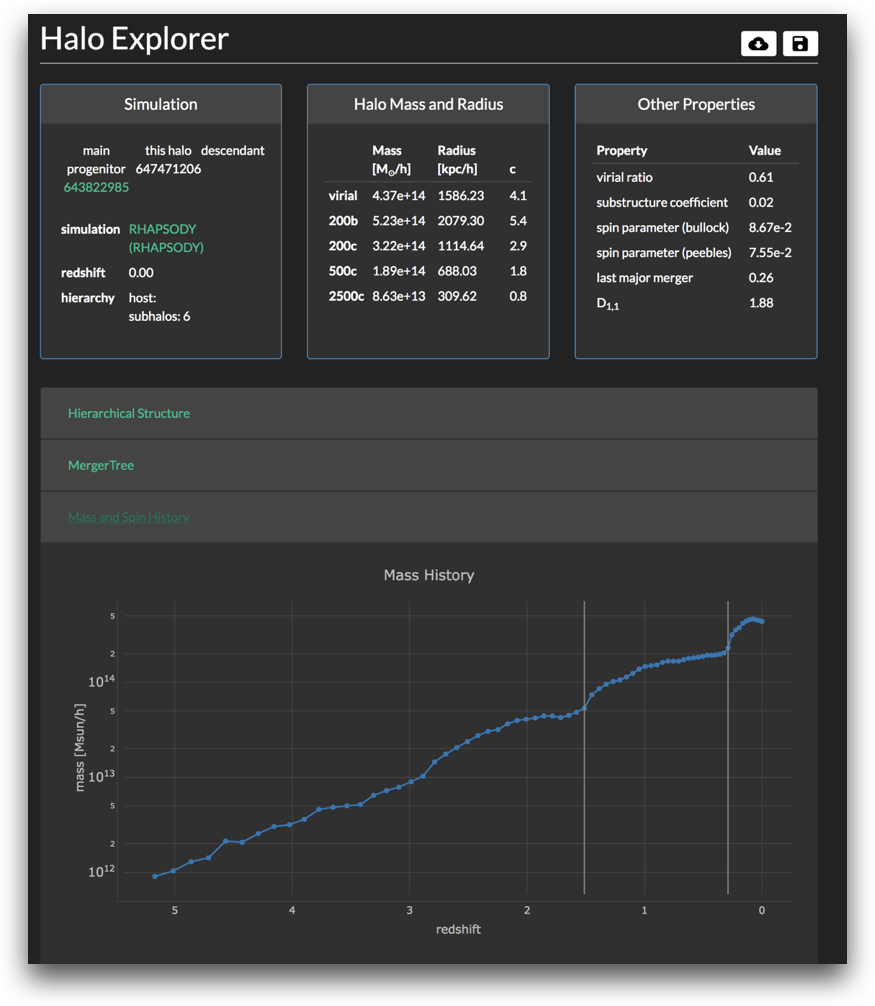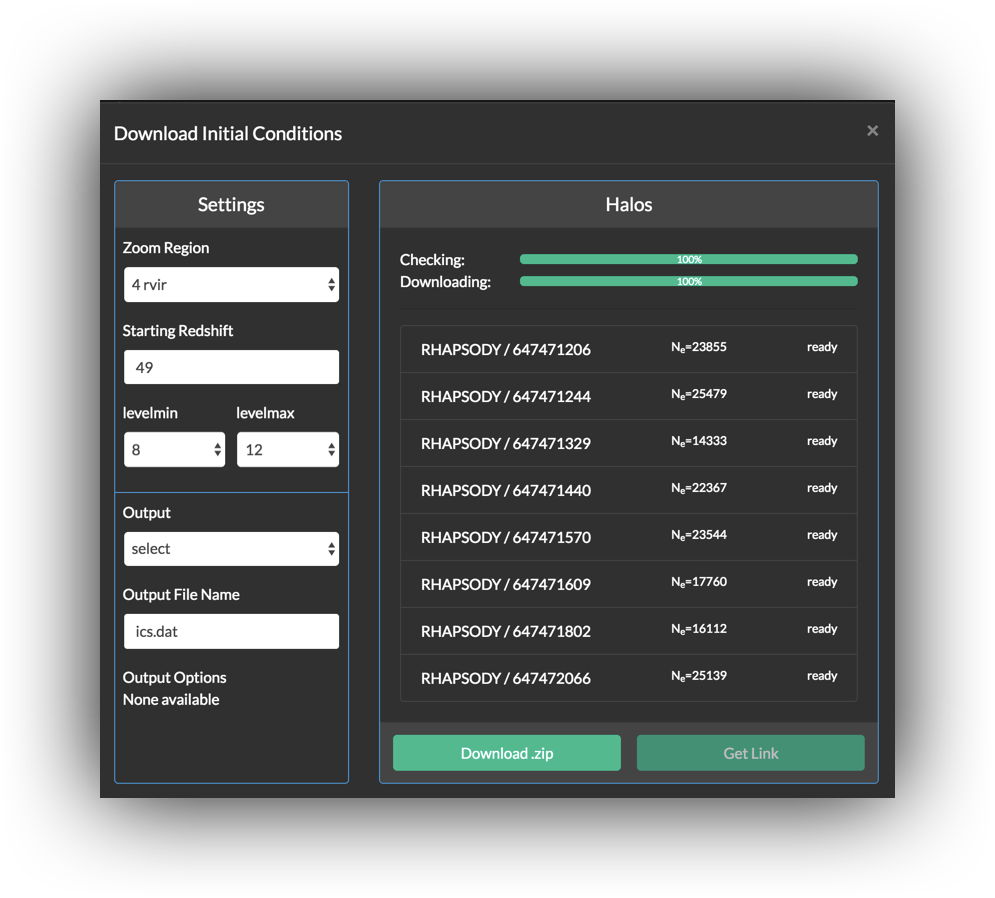cosmICweb
A Database for Cosmological Initial Conditions for Zoom Simulations
New Registration Required!
If you previously had an account on cosmicweb.astro.univie.ac.at , you will need to register again. We apologize for the inconvenience.
Select Dark Matter Halos
Search in a large collection of state of the art cosmological dark matter simulations and filter halo catalogs according to your needs.
Generate Zoom-In Initial Conditions
Create initial conditions for a large number of cosmological simulation codes with refined particle resolution around your selected halos.
Reference Halos in Publications
Create references for halos that you used in your studies so that research colleagues can easily reproduce and test your results using their own simulation codes.
Cosmological Zoom-In Simulations
Numerical simulations play an important role in modern cosmology. They extend over an enormous range of scales: from hundreds of Megaparsecs, studying the growth of the largest structures in our universe, to the order of kiloparsecs, modeling the evolution of molecular clouds, galaxies and feedback processes, down to the scales of stellar systems and individual stars.
The computational cost of computing and storing the full dynamic range in the entire simulated volume sets a limit on the upper and lower scales that can be simulated in a single run. A popular approach to circumvent this limitation is the zoom technique, in which the immediate region around the object of interest is simulated with a highly increased resolution compared to its surrounding large scale environment. This allows to capture both the influences of the cosmic environment from fluctuations on scales equal and larger than the object as well as small scale fluctuations affecting the structure of the object directly.
Running a successful zoom-in simulation requires many steps: Pre-running a simulation with uniform resolution, identifying structures in that simulation and selecting the ones that are interesting for your use case, tracing these structures back to their origin in the initial conditions, increasing the resolution in these regions and rerunning the simulation.


Goal of cosmICweb
cosmICweb addresses three important issues with the current work flow for setting up and running zoom simulations:
- Finding objects of interest to simulate. We provide access to databases of full merger trees in which the user can search for halos and galaxies at various redshifts matching their research requirements.
- Generating zoom initial conditions. For every halo we provide multiple proto-halo patches at different trace-back radii. These patches are then combined with the initial conditions of the simulation and together with MUSIC (Hahn & Abel, 2011) initial conditions for most state of the art simulation codes can be generated.
- Referencing initial conditions. Users can reference the initial conditions that were used in their works, which allows other researchers to easily reproduce results and resimulate with different simulation codes for verification.
Our goal with cosmICweb is to provide an ecosystem for the zoom-simulation community to to easily find zoom-targets from existing simulations and to create and share zoom initial conditions. This service allows to easily find and validate target objects for zoom-simulations from existing state-of-the-art simulations as well as new simulations. In combination with MUSIC (Hahn & Abel, 2011), cosmICweb can provide zoom initial conditions for various simulation codes. Target objects can be cited in articles, talks, or on webpages, allowing other researchers to reproduce, compare, and verify scientific results.
Zoom Simulation Workflow with cosmICweb
- select a suitable simulation for simulation target,
- choose appropriate filters in the Halo Finder and query results,
- preselect some halos using the property list and scatter plot and store them in a new collection,
- take a closer look at individual halos in the Halo Explorer,
- select the target halo(s) by either removing halos from the collection or by creating a new collection,
- download the initial conditions configuration files for the halo(s),
- create the initial conditions for the specific simulation code with MUSIC and run the zoom-simulation(s),
- when publishing the results, promote the collection to a publication and include the generated cosmICweb link in the article.
Overview
The cosmICweb platform consists of four main parts:
- A halo / galaxy finder: Interface to chose the target simulation and redshift, and set various filters to search the merger trees. Query results can be displayed on a scatter plot for further subsampling.
- A halo / galaxy explorer: In-depth details on an individual object. Includes parameters from the merger tree database and various illustration modules (cf. screenshots)
- A Downloader for initial conditions: Configuration and download of the initial conditions configuration file(s) of a single or multiple targets.
- A reference generator: Targets can be bundled in a collection which can be made accessible to other researchers.
Current Status
cosmICweb is currently in a testing phase. If you'd like to try it out, please create an account and we will get in touch with you.


